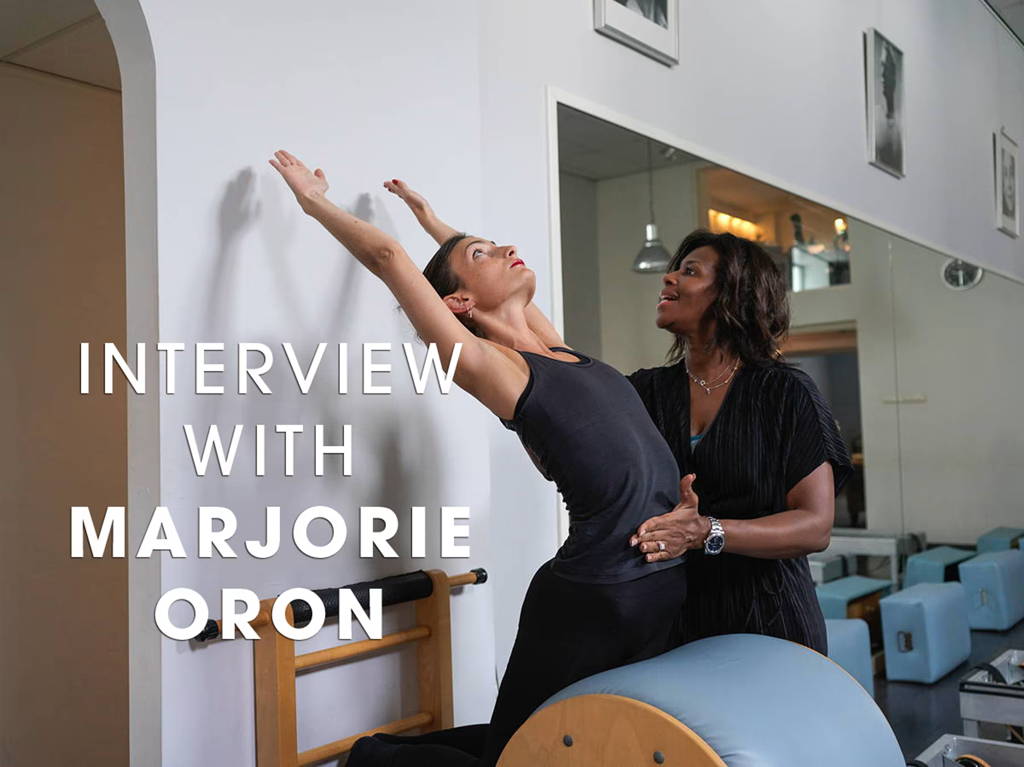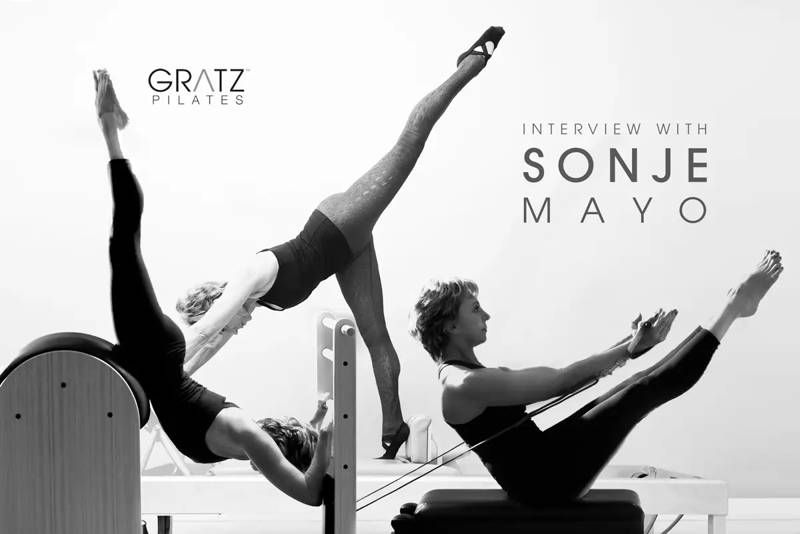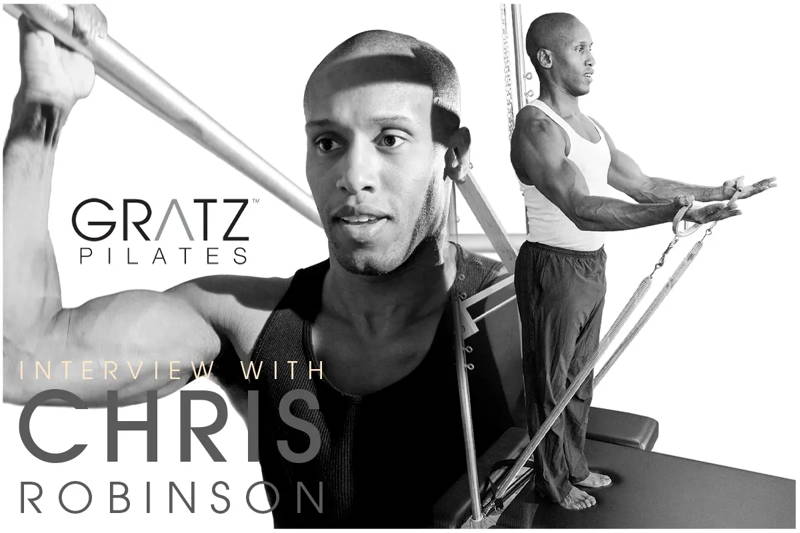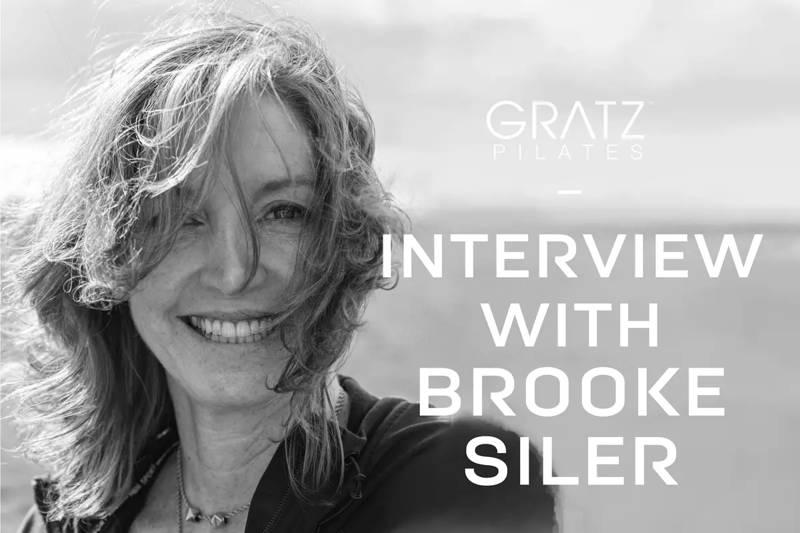
In Conversation with Marjorie Oron: The Pilates Studio in The Netherlands
The Gratz Interview series continues with an in-person interview with Marjorie Oron of The Pilate Studio in The Netherlands. Our European Correspondent, Tavis Bohlinger, traveled to The Hague recently to chat with Marjorie, photograph her beautiful studio, and capture her signature hands-on approach to teaching the Pilates Method.
In Conversation with Marjorie Oron
The Gratz Interview series continues with an in-person interview withMarjorie Oron of The Pilate Studio in The Netherlands. Our EuropeanCorrespondent, Tavis Bohlinger, traveled to The Hague recently to chatwith Marjorie, photograph her beautiful studio, and capture hersignature hands-on approach to teaching the Pilates Method.
TAVIS
MARJORIE
"The first year with Romana had the dramatic result of changing my entire perspective on the human body, and on dance training in general."
MARJORIE (Cont.)
- a five-day, three-seminar option;
- a 12-day intensive;
- a 20-day, independent individual study program with Romana herself.
I stayed with Romana for a year, doing the workout every morning, then spending the rest of the morning working with clients at her direction. When Romana headed home for lunch at 1pm, I would head to Sean Gallagher’s studio to continue learning and helping with the teaching until evening. After that, I headed to my job working as a receptionist for a telecom company. I also taught ballet to kids in New Jersey. When not with Romana or Sean, I was working, sleeping about 6 hours or less a night, just to be able to pay for the Pilates education. About 4 months after training very hard with Romana, I went to a ballet class. I was just flying, performing 1, 2, 3, 4 pirouettes, just easy on-point turns. I couldn’t believe it. So I went again, and it was 1, 2, 3, 4 turns. That was the proof for me. I knew then that all dancers should be doing Pilates, because I felt it in myself. That became my mission. The first year with Romana had the dramatic result of changing my entire perspective on the human body, and on dance training in general.
TAVIS
MARJORIE
TAVIS
MARJORIE
TAVIS
How did you price your services to a market that had no idea what Pilates was?
MARJORIE
For one private I charged 40 guilders, or about 20 dollars. But I also had a special dancer’s price of 25 guilders. It was really nothing, but I worked almost 60 hours a week and just tried to build gradually.
TAVIS
How did you market yourself? I'm assuming you already had access to customers in the dance community. What about normal people, non-dancers?
MARJORIE
That's why I moved to The Hague. Through the same orthopedic surgeon who gave me the cortisone injections during my dancing years, I had access to a network of physical therapists. I started to give lecture demonstrations to them, and they started to send me their clients. I really had to educate people here, both the therapists and the clients. People couldn’t understand why they had to pay the kind of money I was charging, which was still small back then. One very difficult part of teaching Pilates in The Netherlands is that most therapies are covered by the national the health care package; physical therapists and chiropractors are free. People who were willing to pay for Pilates came from a certain income level, or they were foreigners already acquainted with the Pilates Method.
TAVIS
Did your growing client base make you want to expand into this much larger space here at Keizerstraat 32?
MARJORIE
I had wanted to expand for some time, but what really pushed me was Romana. The question had come from her to open up a Pilates teaching center in Europe, but I didn’t have space in my two little rooms. One day I was walking down this same street, Keizerstraat, and saw this space we are sitting in now. It was deserted, the windows were dirty; it was just an old furniture factory at the time. Still, I saw the potential, but the banks were unwilling to lend to me. They didn’t understand the business model, the product, and they thought I was too young. Three of my clients loaned me the money to make it possible. I opened the space in December 1999. Romana herself came over in June 2000 to teach a 12-day intensive right here in our space.
TAVIS
What are some of the memorable things that Romana taught you beyond Pilates?
MARJORIE
Romana taught us to be really happy and to live a healthy life. She taught us that through the Work. Romana nurtured us in many ways how to take care of our mind, our body, and our soul. She taught us discipline: you don't come to the studio and not work out; you work out. Even if you have a little bit of aches and pains you work out, not beating your body up, but in a good way. Romana was always very positive, very uplifting, always lifting you up. She made you do things that you maybe thought you couldn't do. For whatever reason, she would be able to pull it out of you and make it work for you. That was her big talent, that she could move everybody. She was an inspiration just standing there, and her aura was so big that you just felt powerful. Those of us who were working with Romana carry that forward, although we’re not Romana. We’re trying to transfer her energy and positivity to show that Pilates is more than just exercise, more than just a beautiful picture on Instagram. No, Pilates is a way of life that you live from the inside.
TAVIS
As the global quarantine slowly eases up, what is the value for clients of being in the studio versus online? What value does the equipment actually bring to the work of Pilates?
MARJORIE
You don't have to work against gravity. You can see the reformer, for instance, like a support system. On the mat you work with your own bodyweight. And you have to work against gravity. The reformer puts you right into place. It supports your head. It gives you the posture that you need, and it brings you into your powerhouse. And then the springs move you through the powerhouse. The reformer sets you up in perfect alignment and positions that enables you to feel your body working from your center out. So that is the benefit of having a reformer, as well as all the other apparatuses; they give you benefits to work on your individual needs. That's why we have the system here at The Pilates Studio, including the Cadillac, the Chairs, the Barrels, the Pedi Pole, etc. Again, Pilates is not a choreography but a system that you're trying to build to help your needs. And each piece of apparatus has its value.
Also, the work will be different for different bodies. One person might have certain things that don't suit them on the Wunda Chair, but it suits them on the Barrels or another apparatus. The system requires really close, individual attention to every client. You can't treat every client the same.
"Remember: it's not about you, it’s about what you can bring to the client. What is going to make them feel good?"
TAVIS
MARJORIE
TAVIS
MARJORIE
And don't forget the “touch,” the tactile guidance that along with the voice makes for good teaching. You need to give a touch. You shouldn't manipulate the body, but you should be able to correct the body by giving one touch. And it’s hard to feel the energy through a screen.
TAVIS
MARJORIE
“The goal of Pilates is for an individual person be in control of their body, and not at the mercy of their body.”
– Marjorie Oron
Find Our Store
- List
- Map




